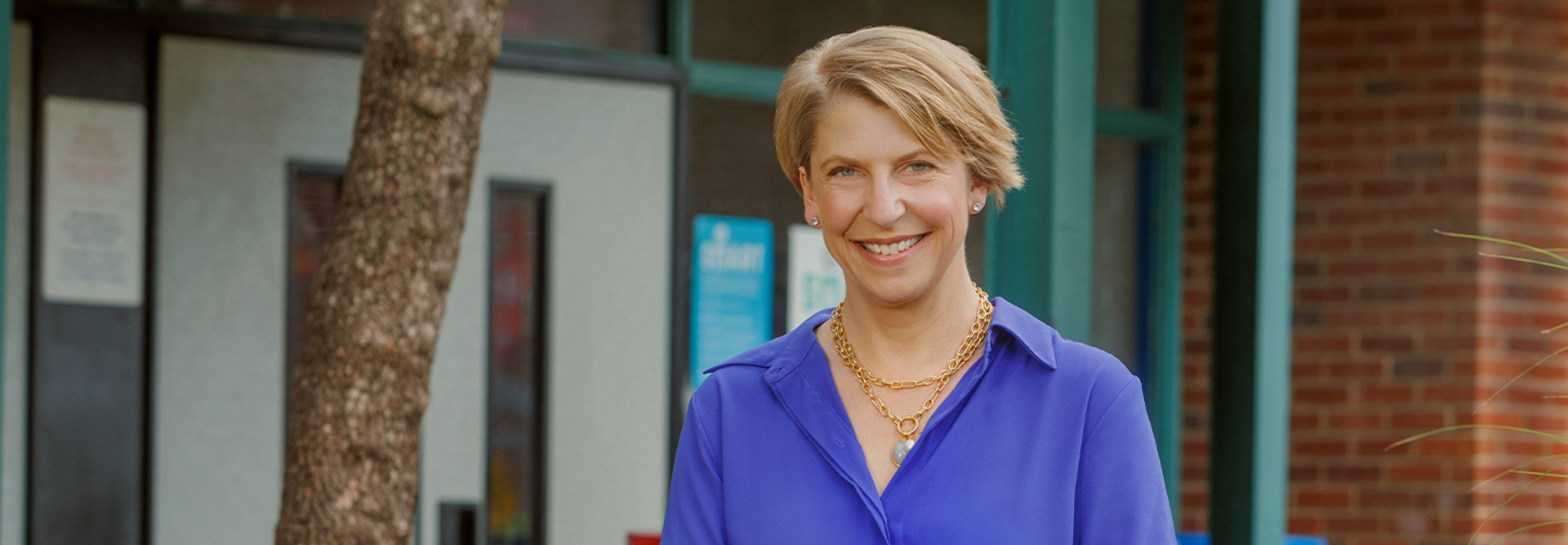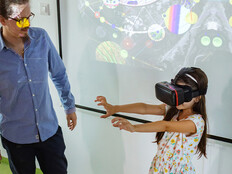EDTECH: You have an extensive background advocating for people with disabilities, and now you are at CAST. What should readers know about this organization?
JONES: Our current education system is behind the times in terms of how we handle special education for students with disabilities and general education for everyone else. CAST is about the future of education. What CAST’s work and what neuroscience have shown us is that we are all variable learners.
Our brains are all as different as our fingerprints, and throughout its 40-year history, CAST has been focused on one core value: People are not broken, systems are poorly designed. And those systems are creating a barrier that holds back human innovation and learning.
CAST actually started in 1984 when the founders worked with nine students whose families were told by society, “Your child is broken, they will have to live forever in an institution.” CAST began drawing from neuroscience, the science of learning, architecture and technology to create the Universal Design for Learning framework, whose purpose is to help educators intentionally design any learning experience so that everyone can benefit.
EDTECH: So UDL is not only for students with disabilities?
JONES: No. Universal Design for Learning comes from the idea that we’re all sort of on a spectrum. So, if you really want to engage all of the students in a classroom, you must start by understanding that they learn in different ways, and they are going to need multiple means of accessing information or demonstrating what they know. Educators have to design for variability.
For example, in the United States, we may have 30 kids in a class and one teacher. And then we say, these five have disabilities; they go down the hall with Mrs. Jones. These 10 are multilingual learners, so they go down the hall with Mr. Alfonso. These others have experienced great trauma for various reasons, so they go with Counselor Joe. So now that teacher has no one left in the room.
WATCH NOW: Technology helps prepare students with disabilities for careers.
What Universal Design for Learning says is don’t separate, don’t segregate. Design your environment so everyone has the ability to come in and learn together. When you look at the UDL framework and the guidelines, you have a roadmap to begin to design that environment.
EDTECH: This previously niche approach to learning appears to be taking off, as we’ve seen more education conferences address this topic.
JONES: Yes, in 2008 UDL was included in the Higher Education Opportunity Act, and in 2015 it was added to the Every Student Succeeds Act, which covers K–12 public education policy. A few years later, it was added to the Carl D. Perkins Vocational Education Act, which addresses career and technical education. So, UDL is widely used today. Many states, including California, New Hampshire and Maryland, have adopted it in their own laws. And most exciting, it is being widely adopted around the world.
EDTECH: How does segregating students with disabilities from general education students create barriers and impact learning?
JONES: Segregating students, especially in high school, comes with a social stigma that has students internalizing: “I’m different. I don’t belong.” That depresses learning. It causes anxiety and depression. So, in a sense, the way our schools are designed is harming students.
EDTECH: How can schools use technology to reduce stigma for students with disabilities?
JONES: We’re all carrying these small computers in our pockets that do lots of things for us. When you use those with everyone, then no one is stigmatized. Everyone’s getting help.
It starts in the classroom with our general education teachers being able to design for a lot of different minds, because variability is the norm.
RELATED: District technology leaders can get started with UDL.
One of the most inaccessible things that educators hand out are worksheets. They are not very flexible. You are given a prompt, you have to fill in a word. There are many ways that a disability might prohibit you from interacting with that content at all. But it’s probably something that, with some planning, educators could easily put into a different format.
Educators need to think about the materials they give to students. Technology offers a very flexible, dynamic way to make content really usable, especially with advances in artificial intelligence.
Students that have been identified as having a disability have rights under the Individuals with Disabilities Education Act. They should have a team of people who come together to create a roadmap or a document we call an individualized education program. The IEP process is one way for educators and families to discuss the student and find ways to provide access to learning through assistive technology.
EDTECH: So, technology is really an equalizer for students with disabilities?
JONES: I think for all of us, yes, it’s absolutely essential. We’re all using technology every day, and we will for the rest of our lives. However, for people with disabilities, technology is unbelievably transformative for learning when educators design with UDL. It is beyond an equalizer — it is a complete transformation of their ability to engage in the world.
Technology lowers the stigma around them. If you are a person who is low-vision or blind, you can still get all of the content you need. You can still comprehend, analyze, be a critical thinker and engage with the world, and still benefit from technology innovation. But without technology, those students are locked out in many ways, and we all suffer when that happens.












